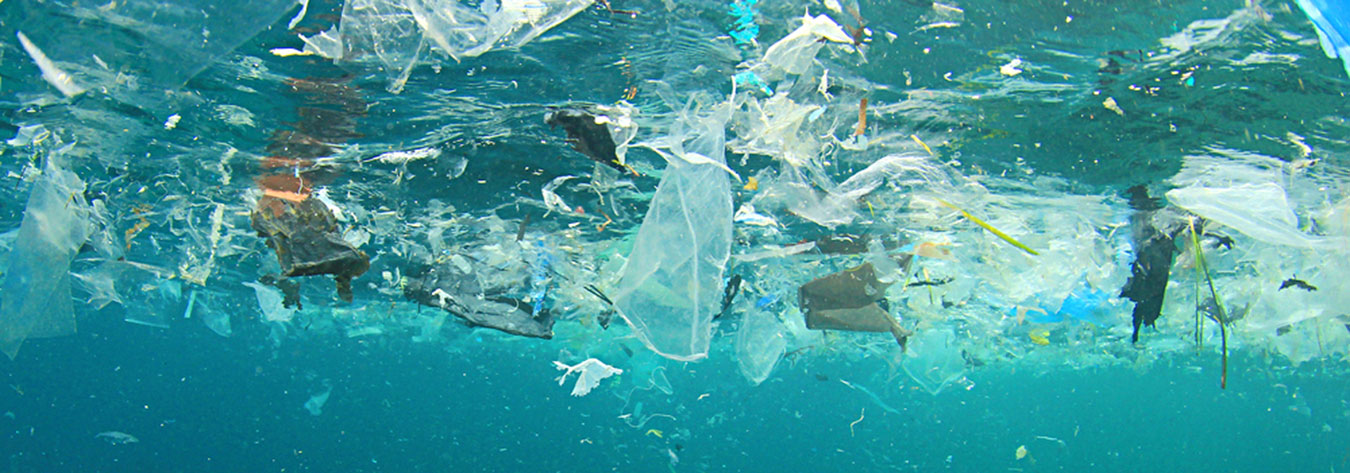According to the Hawaii Pacific University Oceanic Institute, oceans cover 71% of the Earth’s surface and contain 97% of the Earth’s water. Less than 1% of the Earth’s water is fresh, and 2–3% of that is contained in glaciers and ice caps. The oceans account for 99% of the living space on the planet.
For years, scientists believed that the oceans were so vast that they had an unlimited ability to dilute pollution, and thus render it harmless. We now know this is not true. But it was only in the 20th century that significant international laws were enacted to counter this contamination.
Ocean pollution has many causes: chemicals, particles as well as industrial and agricultural waste. Fully 80% of the noxious waste in the seas comes from the land. One of the most striking examples was reported by The Guardian in early October. It is known as the “Great Pacific Garbage Patch”, a vast sprawl of mainly plastic waste located between Hawaii and California. The heart of this patch is estimated to be around 1mn km², with the periphery spanning a further astonishing 3.5mn km². It is caught in one of the ocean’s huge rotating currents and comprises fishing nets, large plastic containers and smaller broken-down micro plastics that can be eaten by fish and so enter the food chain.
Plastic makes up 80% of marine debris. Discarded plastic bags, six-pack rings and other forms of waste are a danger to wildlife and fisheries. Fishing nets, usually made of plastic, are often left or lost in the ocean and they entangle fish, dolphins and other creatures, leading to a variety of ills and even, in the case of those that need to return to the surface to breathe, suffocation.
Plastics are a major problem because they do not bi
odegrade in the way many other substances do. There is some degradation when items are exposed to the sun, but only under dry conditions. In the ocean environment plastic disintegrates into ever-smaller pieces. These are consumed by marine life, which then works its way up the food chain.
Aside from plastics, other toxins pose particular problems, especially those that do not disintegrate rapidly, as is the case with PCBs, DDT and pesticides in general, as well as radioactive waste. Heavy metals such as mercury, lead, nickel and arsenic are also a major problem, as these accumulate in the tissues of many species of aquatic life.
This is important to note, because of the potential danger to human beings. For example bluefin tuna—relatively high up in the food chain—are known for having a high level of mercury, so much so that in 2004, the US Food and Drug Administration recommended that pregnant women, nursing mothers and children should limit their intake of the fish. Some shellfish and crabs have been shown to survive in polluted environments, but the farming and harvesting of such creatures needs careful management if they are to be used as food.
A somewhat surprising source of marine pollution is underwater noise created by passing ships, oil exploration seismic surveys and low-frequency sonar. Some marine animals are especially affected because they have weak eyesight and live in a world largely defined by acoustic information.
The oceanographer Sylvia Earle has said that, “undersea noise pollution is like death by a thousand cuts. Each sound in itself may not be a matter of critical concern, but take all together, the noise from shipping, seismic surveys and military activity is creating a totally different environment [from that which] existed even 50 years ago. That high level of noise is bound to have a hard, sweeping impact on life in the sea”.
One way of tackling the overall problem is for human beings to pollute less. But of course that requires social and political will. Yet, people must learn to respect the environment and be less disposed to abuse it. It is in all our interests, wherever we live, to see that ocean pollution is contained as far as is possible.







